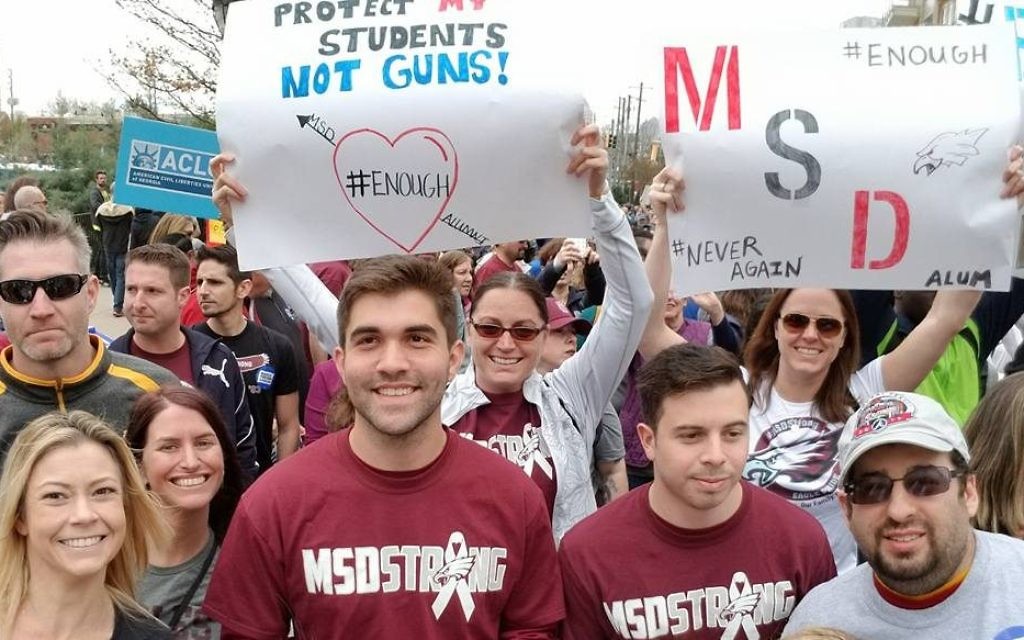Young People Lead Charge at March for Our Lives
A Marjory Stoneman Douglas alumna admires the new generation of teen activists.

It’s being called one of the most poignant demonstrations of a generation because of the sheer volume, because of the message and because of the organizers behind it. The March for Our Lives on Saturday, March 24, took place in over 800 cities around the world, and although 10,000 people were expected in Atlanta, estimates are that upward of 30,000 showed.
Marchers carpooled, took the free rides offered by Lyft and crowded MARTA stations. They arrived at the starting point near the Center for Civil and Human Rights four or five hours before the March.
What was overwhelmingly clear about this event, though, was that many who organized and participated weren’t yet old enough to obtain a driver’s permit.
Get The AJT Newsletter by email and never miss our top stories Free Sign Up

In the hours before the march, children who looked to be anywhere from middle school age to late teens were directing traffic. A tall, thin boy with a squeaky voice and a pass around his neck stood near the stage where speakers would meet and chatted with what appeared to be security.
A teenage girl with braces and a March for Our Lives T-shirt headed up the roped-off area for students and alumni of Marjory Stoneman Douglas High, who would lead the march with civil rights legend Rep. John Lewis.
The overwhelming majority of the signs were held by children and young adults.
In the area near the stage with the rest of the MSD alumni, I spotted 2107 Democratic congressional nominee Jon Ossoff. I listened to the speeches, poems and songs composed mostly by high-school-age children, and it became clear that a few of the students standing with their parents near the stage were current MSD students who came to support the Atlanta event.

When the speeches ended, students and alumni were ushered to join Lewis at the front of the march. As we walked forward holding banners and homemade signs with cameras flashing and media yelling questions at us, a teenager with a megaphone that seemed too large for his body walked calmly to the front of the line.
“What do we want?” GUN CONTROL. “When do we want it?” NOW.

We walked 2½ miles to the Capitol building, but just before people began to disperse, a crowd gathered to the side of the street. Representing the 17 people slain Feb. 14 at Marjory Stoneman Douglas High, 17 empty desks painted with chalkboard paint stood covered in chalked messages of hope and encouragement. A line had formed of people waiting to add their messages.
With the march over, where do we go from here?

The children involved in the March for Our Lives movement have made it clear that this is just the beginning. Many marches had areas where people could register to vote. Organizers are still communicating with those who participated in the march and urging them to send messages to Congress.
It’s clear that although most involved in the march and the movement aren’t yet old enough to vote, they soon will be. Although they might not have a vote yet, these children do have a voice. And there’s no doubt that they’ll continue to make sure it’s heard.




comments